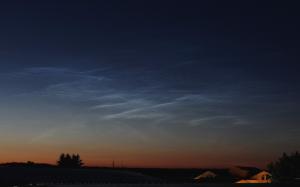Weekly Happenings - June 20, 2018
Weekly Happenings is a weekly digest of current events and happenings in astronomy and science, either local or worldwide. This is the place to grab a quick astro-fix to settle your anxiety about space or perhaps to woo your friends with your astro-prowess. Regardless, this is a place to kick back and get a heads up on cool things happening this week. Enjoy!
---------------------------
At 6:07 a.m. EDT on Thursday, June 21st, Earth will reach the point in its orbit where the Northern Hemisphere is at maximum tilt (23.4°) towards the Sun. This is the Summer Solstice and marks the first day of summer in the Northern Hemisphere. The weeks around the Summer Solstice are when we have the shortest nights of the year. Which is awesome for beach days, BBQ’s, and late summer hangouts, but hammers the astro-geek community with only about 4-5 hours of total darkness each night. On the Summer Solstice the Sun crosses the sky 23.4° north of the celestial equator, placing the Sun at its highest point in our sky for the year. On the Tropic of Cancer, the Sun will pass directly overhead at noon, with the Arctic Circle experiencing the Midnight Sun and the Antarctic Circle diving into Polar Night (nights lasting longer than 24 hours).
All that aside, the Summer Solstice brings fabulous summer sunsets, beach days, no school, fireworks, BBQ, and loads of heat loving excess. As well as many awesome celestial features and events like the Milky Way Galactic Nucleus, the Summer Triangle, the awesome Perseid Meteor Shower and late nights chasing the Milky Way with our telescope as we get lost in the Sagittarius Star Cloud, the Swan Nebula, the Lagoon Nebula, and the amazing views the galaxy offers to summertime sky watchers. Happy Summer Solstice!
With only a few hours remaining until the Summer Solstice in the Northern Hemisphere, noctilucent cloud viewing season is starting to kick in. Noctilucent clouds (NLC) are thin clouds that form in Earth’s mesosphere. Comprised of water vapor that rises in the summer months, freezes, and collects on tiny specks of meteor dust, NLCs are the highest clouds that form in Earth’s atmosphere. The elusive nature of NLCs make them a challenge to spot. For one, they only occur in and around the summer months, and are most visible between 50° and 70° latitudes. They also require the observer to be well into twilight with a clear view of the western horizon at sunset or the eastern horizon at sunrise. Because NLCs are so tenuous, they are only visible when sunlight grazes the mesosphere, illuminating the clouds, making them visible to an observer that can still see the sunlit mesosphere from their late twilight location. At least three Frosty Drew Observatory astronomers have observed NLCs, with one of them spotting them at Frosty Drew Observatory. On May 31st, NLCs were spotted in the pre-dawn sky over Denmark, so the viewing season is on! To see noctilucent clouds, you have to be out in late twilight on a clear night with a good view of the western horizon at night or eastern horizon in the morning. The clouds will appear as silvery or blueish wisps that are dimly visible. Let us know if you see NLCs this year, and if you happen to catch a photo of the clouds, post it on our Facebook and we’ll share it on our time line.
On June 7, 2018, NASA’ Mars Exploration Program announced the discovery of new evidence suggesting a period in Mars’ ancient past that the red planet could have supported life. The discovery was made by the Curiosity rover, which resides in Gale Crater. Curiosity drilled into the top five centimeters of sedimentary rock and collected samples from four areas of Gale Crater. The samples are from mudstone, which is three billion year old sediment that was deposited by water flowing into an ancient Mars lake. Once the samples were collected, Curiosity’s Sample Analysis at Mars (SAM) instrument identified organic molecules in the powdered rock. These molecules raise questions about the previous existence of life on Mars. We have clear evidence that Mars’ climate allowed surface based liquid water to exist in the distant past, and though this new evidence doesn’t indicate the presence of ancient life on Mars, it signals that we are moving in the right direction. Check out the Mars Science Laboratory (MSL) Curiosity rover and catch up on all things Mars as we gear up for a fabulous summer of Mars viewing in the Frosty Drew Observatory telescope.
- Author:
- Scott MacNeill
- Entry Date:
- Jun 20, 2018
- Published Under:
- Scott MacNeill's Columns




